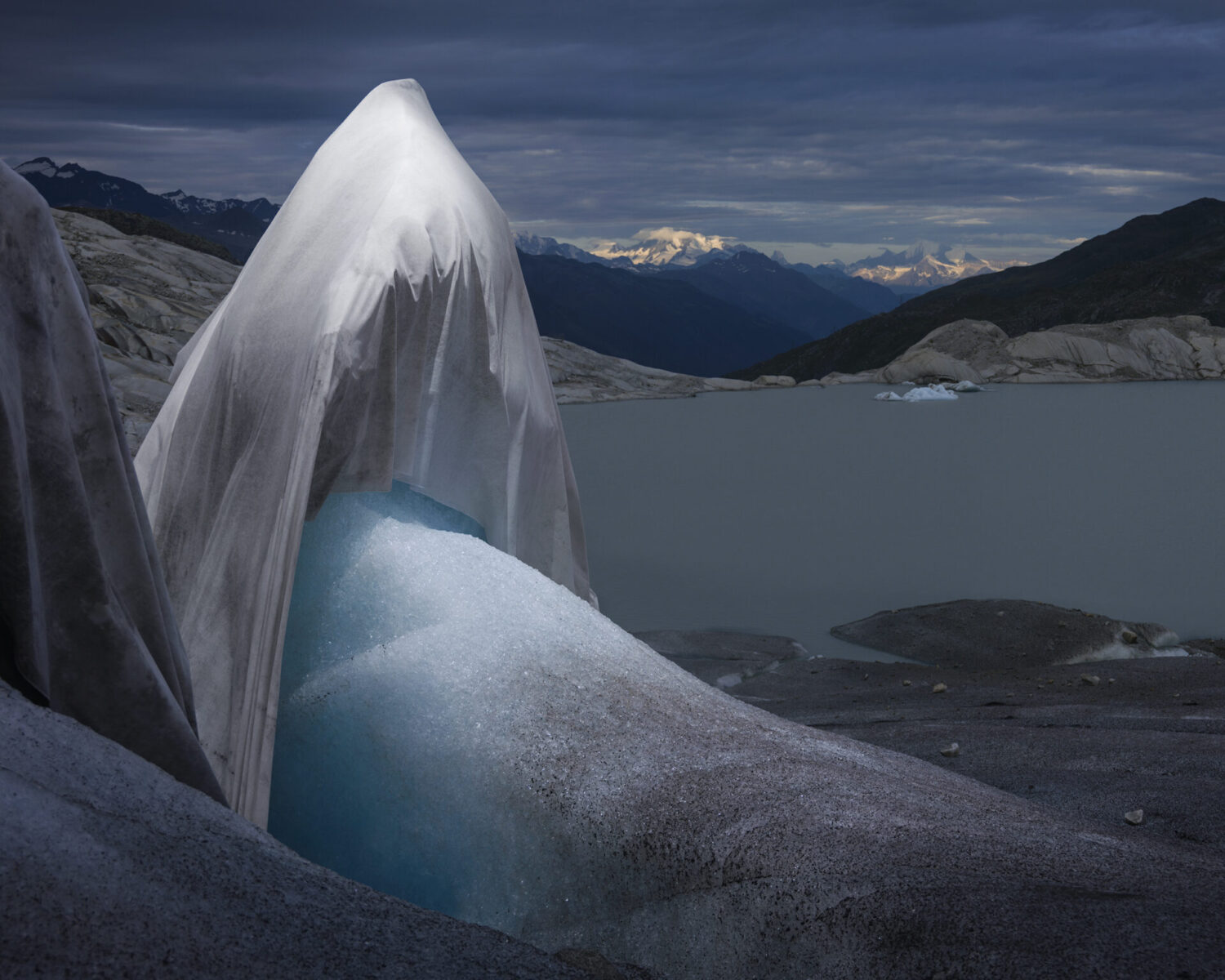Shroud
With a granular knowledge about environmental projects across the globe and wanting to create a project addressing adaptation Klaus Thymann conceptualised the idea of human adjustments to climate change with the financial issues as driving forces behind it. The collaborative work Shroud focuses on the Rhône Glacier in Switzerland and its tourist attraction, the ice grotto.
In an attempt to preserve an ice-grotto tourist attraction at the Rhône Glacier from melting, local Swiss entrepreneurs wrapped a significant section of the ice-body in a thermal blanket – white geosynthetic blankets that reflect the sun’s heat. While this slows the retreat, it is only a temporary fix. The sole purpose behind adding the blankets was to try and keep the business going and entrance fees flowing.
The small-scale adaptation does illustrate how financial incentives are the driving forces in most, if not all, climate responses.
A thermal 24-hour time-lapse film was also created for Shroud. Using thermal image technology the film shows how the surrounding landscape’s temperature warms and cools rapidly as the sun moves in and out of the clouds, while the ice keeps a near constant temperature. When looking glaciers over years they are sensitive to even small changes in temperature and precipitation, meaning that even subtle shifts in climate can have significant impacts on their size and behaviour. The film was made in collaboration with the Swiss Institute for Snow and Avalanche Research, Snow Avalanches and Prevention Remote Sensing.
Glaciers are considered key indicators of climate change for several reasons as they respond slowly to changes in temperature and precipitation, making them a useful tool for monitoring long-term trends in the Earth’s climate. Two-thirds of the world’s fresh water is locked up in ice. For people living in mountainous regions, glaciers are vital sources of water for drinking, irrigation and even hydro-electric power. The accelerating retreat of glaciers threatens these communities. It will be a challenge for locals to adapt – and, globally, many more lives will be affected by the resulting changes in sea levels, currents and weather patterns.







